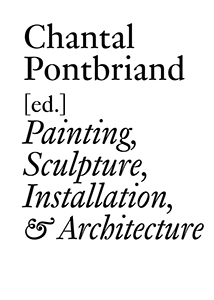In 1975, a small group of enterprising, discontented members of the international art community in the Canadian province of Quebec posed the following question: “What do we know of contemporary art outside of Quebec, in Canada or abroad? Do we even know what contemporary art exists in Montreal? How does information about art circulate?” By way of an answer, the artistically unconventional and theoretically cutting-edge magazine “Parachute” was launched, founded by
Chantal Pontbriand and France Morin. Artists such as
Jeff Wall,
Bill Viola,
Stan Douglas, Eija-Liisa Ahtila, and many others, had the first significant critical reception of their work in “Parachute.” Similarly, figures such as Douglas Crimp,
Thomas Crow,
Thierry de Duve,
Georges Didi-Huberman, Hal Foster, Reesa Greenberg, Serge Guilbaut, and
Laura Mulvey, all of whom have helped define the parameters of art history, theory, and practice, published rigorous, highly pertinent essays in the journal early on in their careers.
Following the three volumes entitled “
Museums, Art History, and Theory,” “
Performance & Performativity,” and “
Photography, Film, Video, and New Media,” this last title of the “Parachute” anthology focuses on painting, sculpture, installation, and architecture: the so-called “traditional and academic media.” They are approached from several perspectives: from new theories of aesthetic production, especially painting, to the expansion of the art world to other artistic territories during the 1980s and 1990s (Russia and South America for instance), from the “lessons” of postmodernism to the definition and exhibition challenges caused by the proliferation of installation art. The essays discuss works by artists such as Lothar Baumgarten, Mona Hatoum,
Guillermo Kuitca,
Louise Lawler, Reinhard Mucha, Jackson Pollock,
Robert Ryman,
Michael Snow, Sots Art artists, and include two particularly seminal artist's essays:
Dan Graham on
Gordon Matta-Clark, and Jeff Wall on
Édouard Manet.



